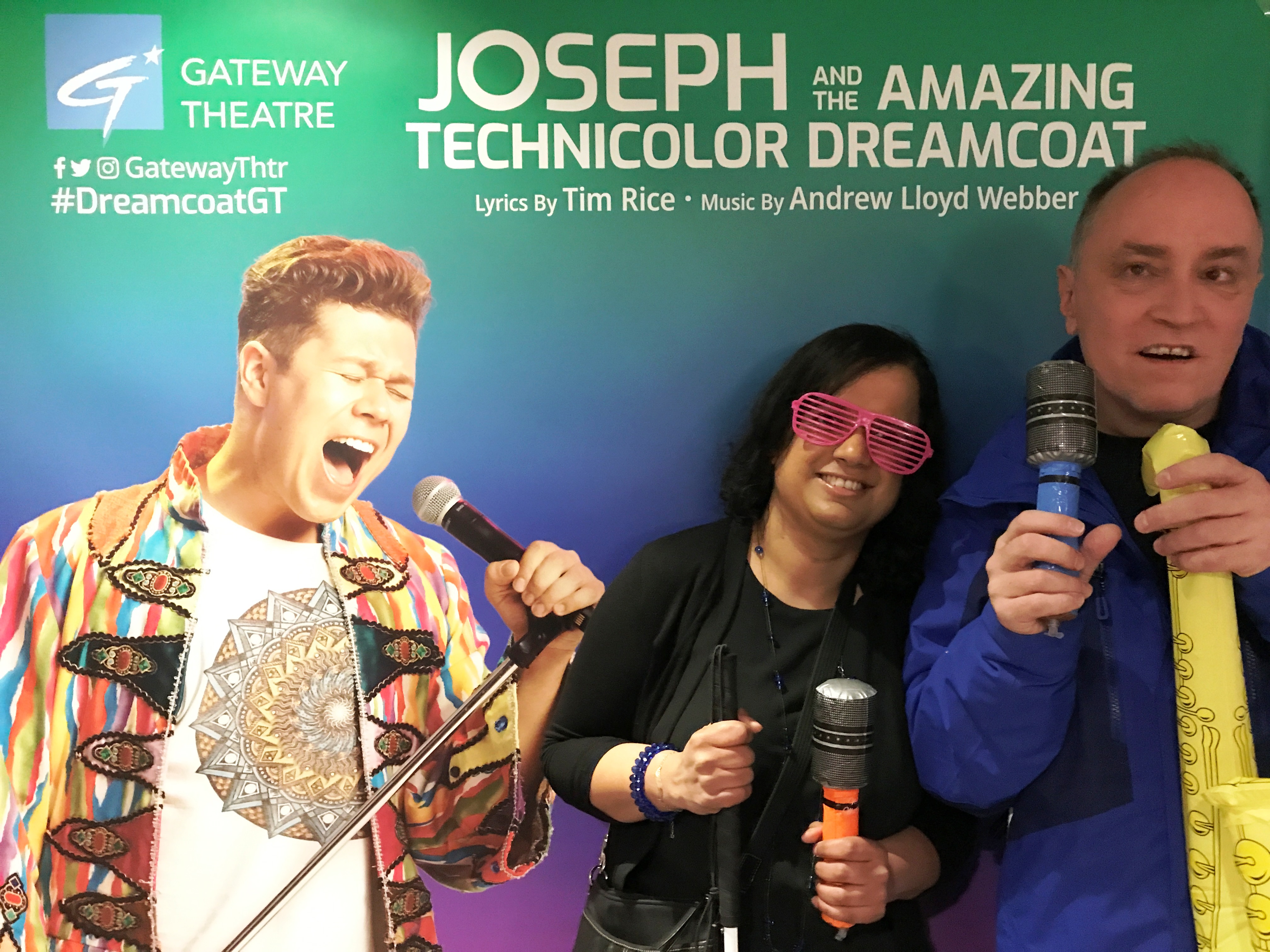Empowerment. Engagement. Authenticity.
VocalEye Describes Joseph and the Amazing Technicolor Dreamcoat
It was December 27, 2019 and my boyfriend, Shawn, and I took our seats in the front row of the Gateway Theatre in Richmond in anticipation of our twelfth VocalEye Descriptive Arts Society's described performance of the year. I'd been counting down to this one for months and knew it would be the perfect high note on which to cap off our performing arts calendar.
Shawn had a surprise coming, I chuckled to myself.
I have the Broadway soundtracks to Wicked and The Lion King at home and,
every time Shawn and I listened to them, I would ask him how he'd feel
about attending a musical where, well, the dialogue was in the music.
"That can't be," he'd scoff. "There has to be some actual dialogue. You
know, like in Beauty and the Beast where people talk in between bursting
into song."
"Nope," I'd say. "You've got to really listen to the song lyrics."
Even as I'd speak the words, I'd be wondering how such productions could
be made accessible to people with vision loss. Shawn and I have been to
dozens of described performances where describers use pre-show notes and
breaks in dialogue to tell us about sets and costumes and physical
characteristics.
But how would a describer find spaces to interject when the songs were
the dialogue?
I'd seen Broadway productions of Phantom of the Opera, Lion King, Wicked
and Mama Mia. I have enough usable vision to know that each song in a
musical is accompanied by elaborate choreography and antics which,
combined with lyrics, bring stories to life.
In a musical, in my opinion anyway, the choreography is the magic
ingredient.
How much is lost when a person, like Shawn who has only light
perception, can't see the dancing and gestures? Could live description
possibly compensate?
We were about to find out.
Here we were, about to experience Joseph and the Amazing Technicolor
Dreamcoat.
Our describer, Annika, set the scene by describing the stage, with the
orchestra pit to the left and a twenty-foot pink star at centre stage.
"The star is directly in front of us," I told Shawn.
Annika went on to describe the characters – Jacob and his twelve sons, a
little boy and his mother who would be referred to as 'the woman' even
though she was the story's narrator, slave traders dressed in leather
chaps and cowboy gear. I particularly enjoyed her description of the
Pharaoh in Act Two, with her gold platform shoes and cobra headdress.
It didn't take Shawn long once the singing began to realize that
actively listening to the lyrics was key to following the story.
"Sure glad we read that Wikipedia summary," he whispered to me.
I nodded, too impressed with Annika's lightning-rod descriptions of the
flag-waving, gyrating, shoulder-slapping characters on stage to reply.
Truth be told, without Annika's well-timed commentary during the scenes
and her detailed verbal portrait of the Pharoh's court at intermission,
a good deal of the over-the-top extravagance and the diversity of the
cast would have escaped me.
I came home and looked up the musical on Youtube so that I could pause
the video and take in any details I may have missed. What I discovered
was that, while pausing the video allowed me to focus more clearly on
things at my own pace, I hadn't missed anything at all. With the lyrics
telling me the story and Annika filling me in on Joseph languishing in
his cell, the courtiers swirling their feathered standards, the eleven
brothers falling one by one to their knees before their
sibling-turned-benefactor and, of course, the Elvis-Pharaoh recounting
his befuddled dreams,,, I'd morphed from person with vision loss to
enthralled audience member.




